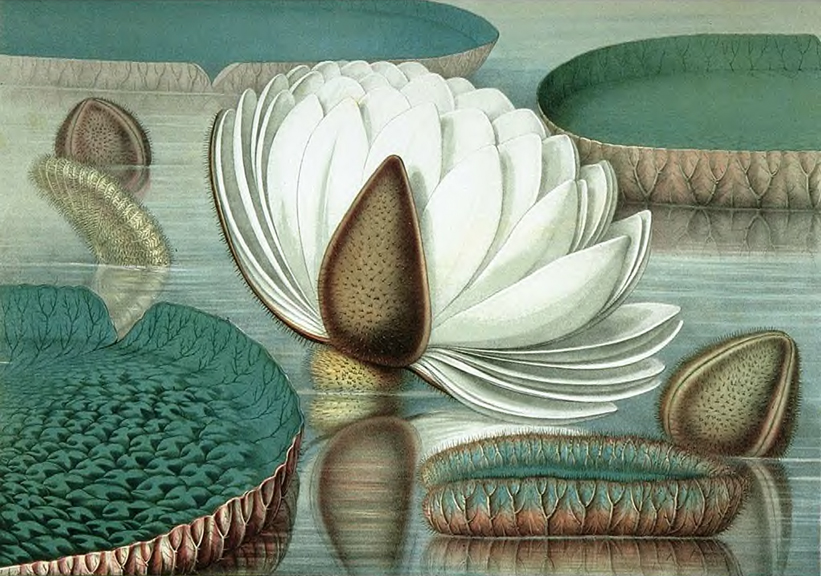
Sharp and the Victoria Regia
Active as a lithographer and photographer on Dexter Street, Washington Village, William Sharp lived and worked at the same address starting in the late 1850s. Sharp would have been a Dorchester resident except that the Washington Village area (Andrew Square) was taken from Dorchester and added to South Boston in 1855. Father-in-law of James Wallace Black, he apparently learned the photographic process from Black, and added photography to his repertoire in 1858.
An English emigrant to American, William Sharp arrived in the United States in 1839 and worked on perfecting the recently developed chromolithographic process during the following decades. The culmination of his efforts was the publication of the illustrations for John Fisk Allen’s Victoria Regia, or The Great Water Lily of America in 1854. For the publication, six illustrations in all were executed on elephant folio sheets. The most beautiful of all these images are these four, showing the stages from the beginning of the Bloom to the Complete Bloom.
To achieve the proper coloration, four separately inked stones were utilized. The resultant images are among the finest botanical chromolithographs ever published. Chromolithographs were first executed around 1835 in England and France. Sharp had been one of the first to explore this process while in England, and he continued his experimentation after he immigrated to America in the late 1830’s. As opposed to hand-colored lithographs, which consisted of printing the image in black and white and then adding color by hand, chromolithography called for the printing of the image in successive stages of color. Initial attempts in chromolithography used two stones in the creation of any image. The first stone was normally inked in black. After the image was thus defined, a second stone inked in one color was applied to the black and white image. As the process was refined, more colored stones were utilized in creating the final colored image. Sharp’s illustrations for Allen’s Victoria Regia are among the most sumptuous images to use the medium ever done, and major landmarks in the history of printmaking.
